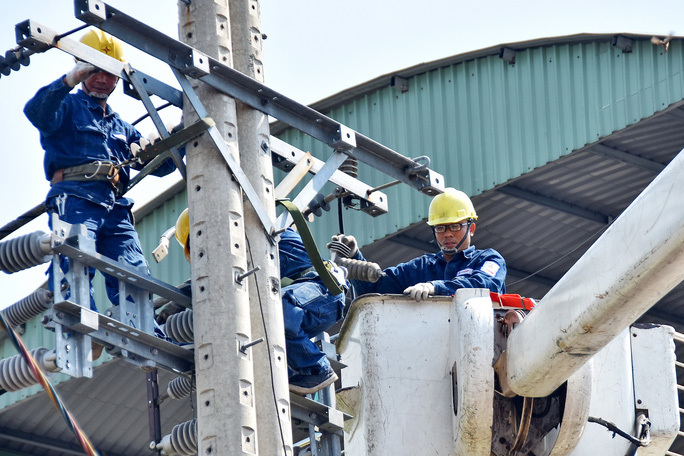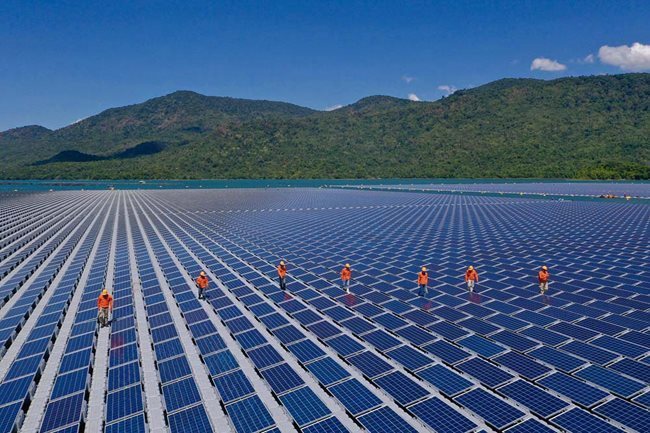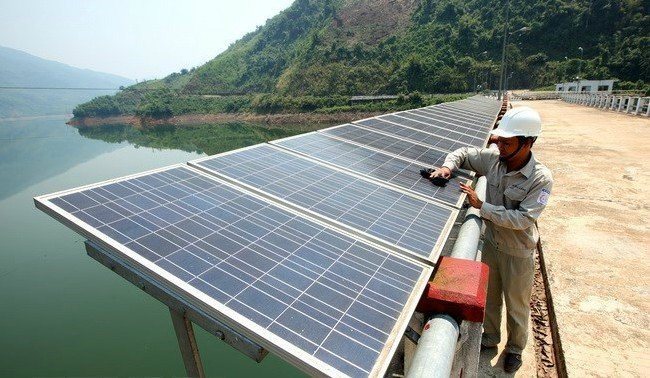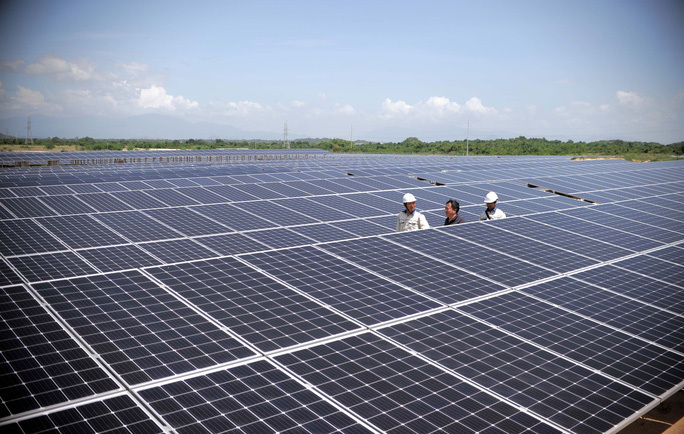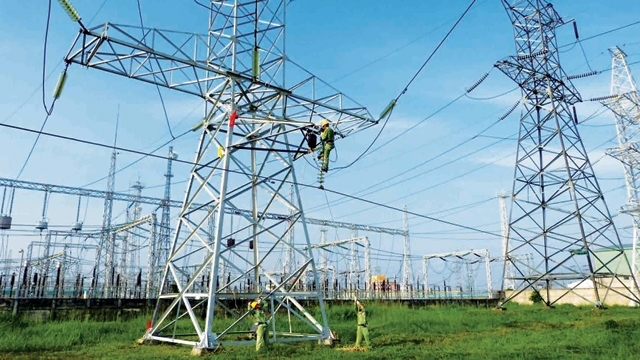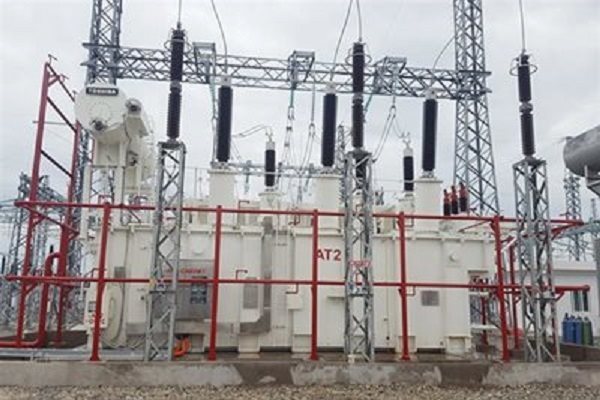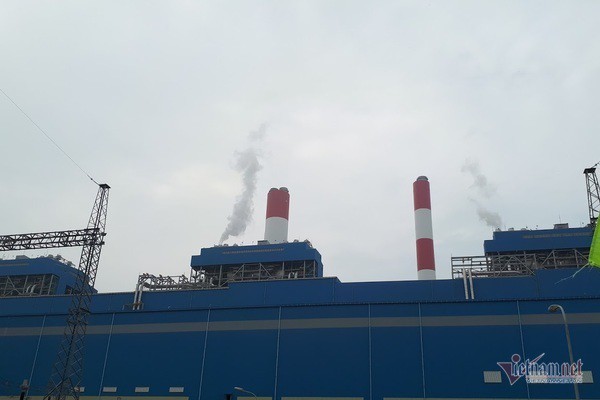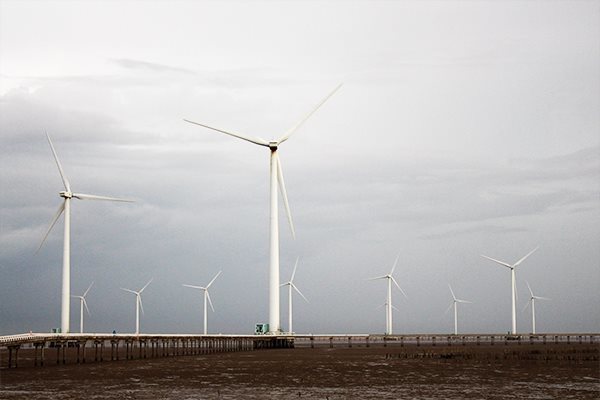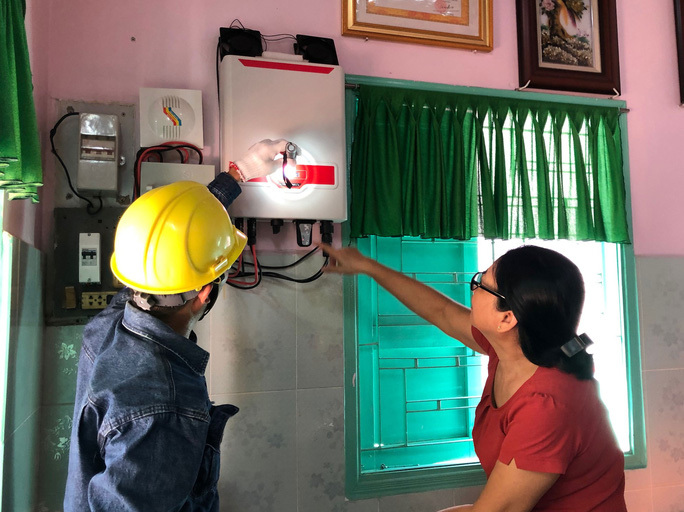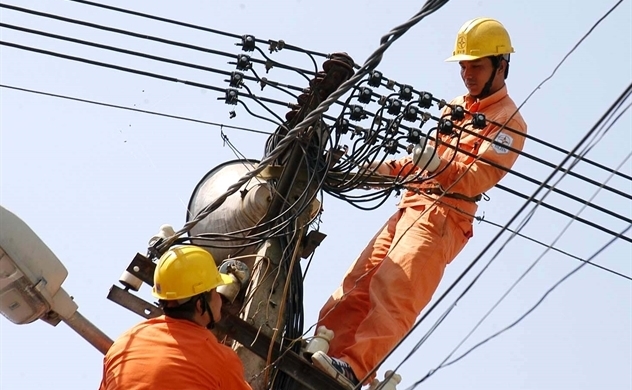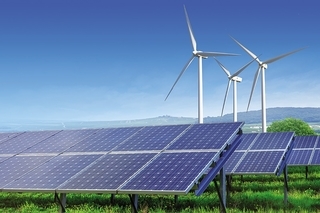- © Copyright of Vietnamnet Global.
- Tel: 024 3772 7988 Fax: (024) 37722734
- Email: evnn@vietnamnet.vn
solar power
Update news solar power
Auction could determine future of solar initiatives
 After months of uncertainty over the policy, the much awaited next round of purchase prices in solar power may be set through auction instead of enjoying the same feed-in tariff required elsewhere.
After months of uncertainty over the policy, the much awaited next round of purchase prices in solar power may be set through auction instead of enjoying the same feed-in tariff required elsewhere.
Electricity shortage in Vietnam anticipated, price increase considered
 The solution of using electricity from oil-run power sources will increase the production cost by VND14 trillion, which will put pressure on electricity prices.
The solution of using electricity from oil-run power sources will increase the production cost by VND14 trillion, which will put pressure on electricity prices.
Experts say auctions could help reduce solar power prices by 30-40%
 When the purchase prices of solar power are set through auction, prices are expected to fall by 30%-40% from the current levels, said experts at a seminar yesterday.
When the purchase prices of solar power are set through auction, prices are expected to fall by 30%-40% from the current levels, said experts at a seminar yesterday.
Solar power prices to be set via auction
 The purchase prices of solar power will be set through auction, instead of using a common price for the entire country, or different prices for different thermal radiation zones, according to officials.
The purchase prices of solar power will be set through auction, instead of using a common price for the entire country, or different prices for different thermal radiation zones, according to officials.
Vietnam urged to stop investing in coal-fired thermal power
 If Vietnam stops investments in new coal-fired thermopower projects, the total amount of coal it would consume could drop by 221 million tons by 2050.
If Vietnam stops investments in new coal-fired thermopower projects, the total amount of coal it would consume could drop by 221 million tons by 2050.
Renewable energy projects in Ninh Thuan face overloaded electricity grid
 The central province of Ninh Thuan has seen a boom in renewable energy projects, especially solar power, but power transmission lines in the province have failed to handle the capacity, experts have said.
The central province of Ninh Thuan has seen a boom in renewable energy projects, especially solar power, but power transmission lines in the province have failed to handle the capacity, experts have said.
Ninh Thuan to upgrade transmission network for solar power use
 The tardiness in upgrading electricity transmission networks is expected to cause big losses to solar power plants in Ninh Thuan.
The tardiness in upgrading electricity transmission networks is expected to cause big losses to solar power plants in Ninh Thuan.
Wood Mackenzie: Vietnam becomes Southeast Asia’s hottest solar PV market
 Vietnam is now the leader in Southeast Asia’s solar photovoltaic (PV) market with the largest installed capacity in the region, Wood Mackenzie said in its statement.
Vietnam is now the leader in Southeast Asia’s solar photovoltaic (PV) market with the largest installed capacity in the region, Wood Mackenzie said in its statement.
Vietnam supports private investment in electricity transmission lines
 Allowing private investors to develop electricity transmission lines is expected to be the best solution to settle the electricity shortage.
Allowing private investors to develop electricity transmission lines is expected to be the best solution to settle the electricity shortage.
Towards lasting energy supply
 In 2030, wind and solar power will be more cost-effective than coal.
In 2030, wind and solar power will be more cost-effective than coal.
Vietnam to amend laws to welcome power transmission projects
 The Electricity Law states that the State holds a monopoly in power transmission. But Deputy Prime Minister Trinh Dinh Dung explained that this means a monopoly in management only, not investment.
The Electricity Law states that the State holds a monopoly in power transmission. But Deputy Prime Minister Trinh Dinh Dung explained that this means a monopoly in management only, not investment.
How expensive is ‘clean’ power?
 Gas-fired power is considered more friendly to the environment than coal-fired power, but the selling price is sky high.
Gas-fired power is considered more friendly to the environment than coal-fired power, but the selling price is sky high.
It's time to increase Vietnam's renewable-energy use: experts
 Vietnam has been step by step switching from coal-fire thermopower to renewable power.
Vietnam has been step by step switching from coal-fire thermopower to renewable power.
Households still waiting for rooftop solar power price approval
 Many households and enterprises in Vietnam have proposed continuing the solar power purchasing price at 9.35 cent per kwh, as applied before June 30.
Many households and enterprises in Vietnam have proposed continuing the solar power purchasing price at 9.35 cent per kwh, as applied before June 30.
Vietnam may increase imports from China to ease electricity shortage
 In the context of a serious electricity shortage, importing electricity from China is unavoidable.
In the context of a serious electricity shortage, importing electricity from China is unavoidable.
Meeting the country’s power needs
 Since 2017, Vietnam has had an attractive feed-in tariff (FiT) rate of 9.35 US cents per kilowatt hour for grid-connected solar projects.
Since 2017, Vietnam has had an attractive feed-in tariff (FiT) rate of 9.35 US cents per kilowatt hour for grid-connected solar projects.
Experience required in solar sector
 The solar power boom in Vietnam is bringing benefits for Chinese suppliers and contractors in engineering, procurement, and construction participating in the value chain, but are urged to be cautious in choosing suitable and reliable partners.
The solar power boom in Vietnam is bringing benefits for Chinese suppliers and contractors in engineering, procurement, and construction participating in the value chain, but are urged to be cautious in choosing suitable and reliable partners.
Developers awaiting latest FiT amid sparked solar rush
 Despite bankability concerns in power purchase agreements, investing in solar power is a new boom in Vietnam as developers, original equipment manufacturers, and contractors rush into the market thanks to the current feed-in tariff.
Despite bankability concerns in power purchase agreements, investing in solar power is a new boom in Vietnam as developers, original equipment manufacturers, and contractors rush into the market thanks to the current feed-in tariff.
Hydro-floating solar farms: new opportunity for Vietnam’s renewable energy sector
 Floating solar panels may just be catching on in Vietnam, but they could be about to grab a huge slice of the country's renewable energy market.
Floating solar panels may just be catching on in Vietnam, but they could be about to grab a huge slice of the country's renewable energy market.
Rooftop solar’s growing popularity in HCM City
 Le Dinh Vu, owner of a home decor store in HCM City’s Thu Duc District, spent nearly VND50 million (US$2,155) to install solar panels on the roof of his newly built house.
Le Dinh Vu, owner of a home decor store in HCM City’s Thu Duc District, spent nearly VND50 million (US$2,155) to install solar panels on the roof of his newly built house.

